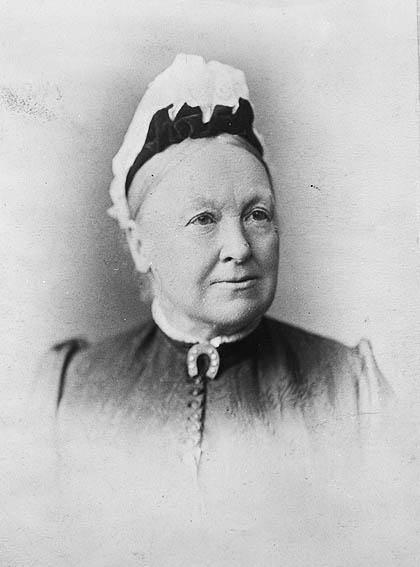‘Listening’ to the women of the 1890s, the first women with an electoral voice in Australia, hails as a guide as we consider the quality of representative democracy in our Federation, further strained by the COVID emergency. For Canberra residents, the historic suffragette calls have a revived urgency as the debate focusses on the extent of Australian Capital Territory’s (ACT) democracy given that the Federal Parliament lies across its path with an ever-present power of override — an issue highlighted with the launch of the Canberra Times’ ‘right to decide’ campaign.
Just as the Canberra Times and the Australia Institute held a public meeting last Wednesday 28 July 2021 about the ACT’s trammelled rights, so too a public meeting supporting women’s suffrage was held in the Albert Hall in South Australia in 1893. The Adelaide Register of 15 March 1893 reported Miss Catherine Helen Spence as moving: “That as no country can be called free where one half of its people are disenfranchised, in the opinion of this meeting the time has arrived when the suffrage should be granted to the women of South Australia.” The meeting triggered a parliamentary Bill passed on 18 December 1894 and proclaimed as law on 20 March 1895. From that day, women in South Australia became the first in the world to have the right to vote and sit in Parliament. In 1899, Western Australia followed suit, giving women the right to vote although without taking the further step of allowing them to become members of Parliament.
As it turned out, no woman ran in the first South Australian election but Catherine Helen Spence did run for the first Federal election, held to determine attendance at the Constitutional Conventions of the 1890s. Spence became the first woman in Australia to run for political office seeking to represent South Australia at the Convention debates. An active campaigner for social and electoral reforms before she had the vote, she experienced prejudice as a woman for most of her life. Indeed, she provides an account in her autobiography of writing to the press for 30 years anonymously to avoid the sting of male chauvinism.
It was Spence’s determination to see the fairest voting system possible as part of the new Commonwealth that led her to run as a candidate. When her nomination became public, she was listed as one of the “ten best men” selected by a Liberal organization to appear, and one newspaper reported her nomination as evoking “an expression of approval”. Yet people raised doubt over her capacity to participate at the Federal level, given the law in the United Kingdom did not recognize women as persons for the purpose of political representation. While polling a credible 7383 votes, it was nowhere near the number needed. She wrote: “Had Mr. Kingston not asserted both publicly and privately that, if elected, I could not constitutionally take my seat, I might have done better”. If Spence had been elected, what is now referred to as the Hare Clark system of proportional representation (because Andrew Inglis Clark adopted Spence’s idea as a delegate at the Conventions) would be called the Hare Spence system.
While not present at the Conventions, Catherine Helen Spence and the many women involved in the suffrage movement were able to impress upon their representatives that they would not vote in favour of Federation if their vote was not protected. Their commitment to uniform suffrage resulted in section 41 of the Constitution.

Portrait of Catherine Helen Spence in the 1890s. Picture: Public domain/Wikimedia Commons
South Australia woman led the way on a fundamental aspect of our democracy. Here in the national capital the ACT is trailing neighbouring NSW and the states when it comes to the quality of our representation. Section 122 of the Constitution provides the Commonwealth plenary power to make laws for the ACT. It is a brooding power with a long shadow as evidenced by the so-called Andrews Bill that overrode the ACT Legislative Assembly’s laws on euthanasia almost 25 years ago. The central democratic question exercising Canberrans presently is how to limit the Commonwealth’s power to exercise that override and give Canberrans the same quality of democracy as their neighbours in Queanbeyan.
The road to self-representation of the ACT in the Federal system took a joint sitting of Parliament to blast through. The Senate (Representation of Territories) Act 1973 passed in August 1974 led to the first Territorian senators elected at the 1975 election with the Northern Territory (NT) and the ACT each represented by two Senators. At that time, each State was represented by 10 Senators (formerly six) and since that time, the number of senators per state increased to 12 in 1983. Tasmania with a population only slightly more than the ACT basks in representation with its Senate complement growing too from 10 to 12. Yet still stuck on two, there has been no increase of Territory representation in that time. In December 1975, the population of the ACT was 200,400 whereas in December 2020 ACT’s population more than doubled to 431,500 people. The equation defies electoral justice and is undemocratic.
Currently, section 40 of the Commonwealth Electoral Act allows the number of senators in the ACT or NT to increase beyond two only when there are 6 or more House of Representatives seats in the jurisdiction. With Canberra’s House representation now on three, there is little prospect of this. It is time then to amend the Electoral Act to increase the number of ACT Senators and thus to enable Canberrans to have more representation in the Federal Parliament. This would open the Commonwealth’s ear to the ring of Canberra residents’ voices when it comes to decisions that impact differentially over the ACT. Importantly, this would also enable smaller parties and Independents the same opportunities to reflect the diversity of the ACT’s citizenry as they would if they lived anywhere else in the country.
And indeed, that is the other part of the story. The ACT has grown and shown its maturity as a self-governing entity, better reflecting its citizenry than any other jurisdiction and standing as a guiding light to the Federal Parliament. If it’s a numbers game, the current makeup of the ACT Parliament is exemplary. Following the 2020 ACT elections, a majority of members of the legislative assembly (MLAs) elected are women, and at least half of every party’s MLAs in the ACT are women (pictured above). Women also make up 56% of the ACT Cabinet. Against this quality of representation in the local parliament, the Commonwealth languishes with an underwhelming representation of women (7 out of 23 in the Cabinet, for example) and of the diversity of Australia’s population more broadly. It is indeed ironic that the Commonwealth Parliament should be in a position to dictate democratic terms to a more representative territory. Rather, the national parliament should be seeking advice from the ACT government about how it has achieved such an important milestone regarding the quality of representation in Canberra – and it should also give Canberrans the respect they deserve in making decisions that can be made in any other state around the country.
It is time for Canberrans to be emboldened by the claims of the women of the 1890s and the democratic calls of the current ACT Legislative Assembly. On behalf of all the people living in Canberra, the ACT and anyone representing the ACT should now demand equal representation in Australia’s Federal system and an increase to the number of Senators representing Canberra to better ensure that result.
- Professor Kim Rubenstein, is the Co-Director of the 50/50 by 2030 Foundation in the Faculty of Business Government and Law at the University of Canberra
A version of this piece was first published in the Canberra Times on Tuesday 3rd August 2021
Kim Rubenstein is a Professor in the Faculty of Business Government and Law at the University of Canberra, which has supported the production of the new podcast series It’s not just the vibe, It’s the Constitution. She is a Fellow of the Australian Academy of Law and the Academy of Social Sciences in Australia.





